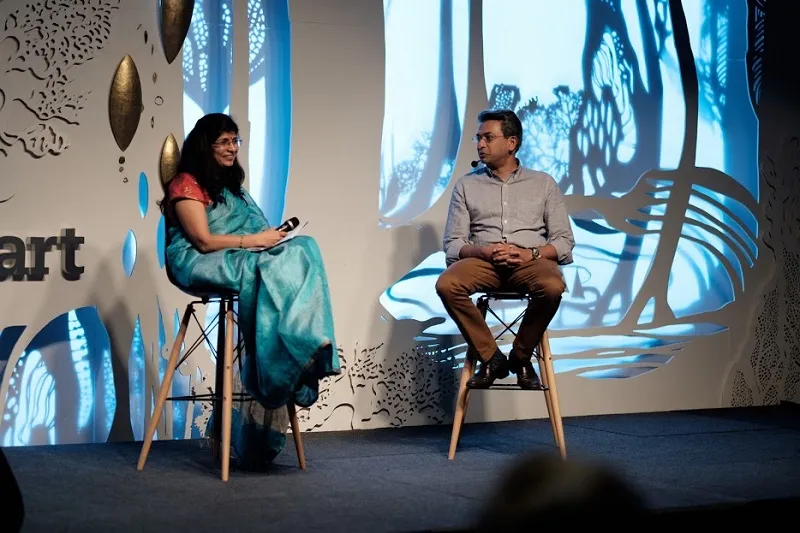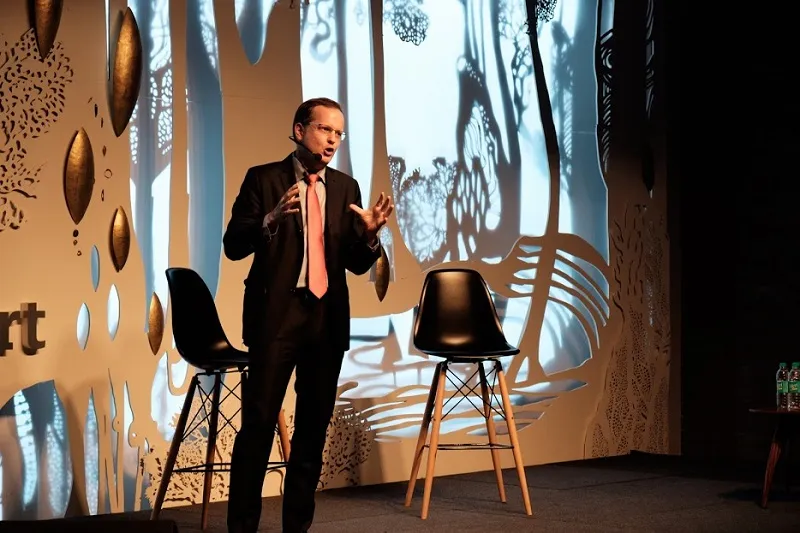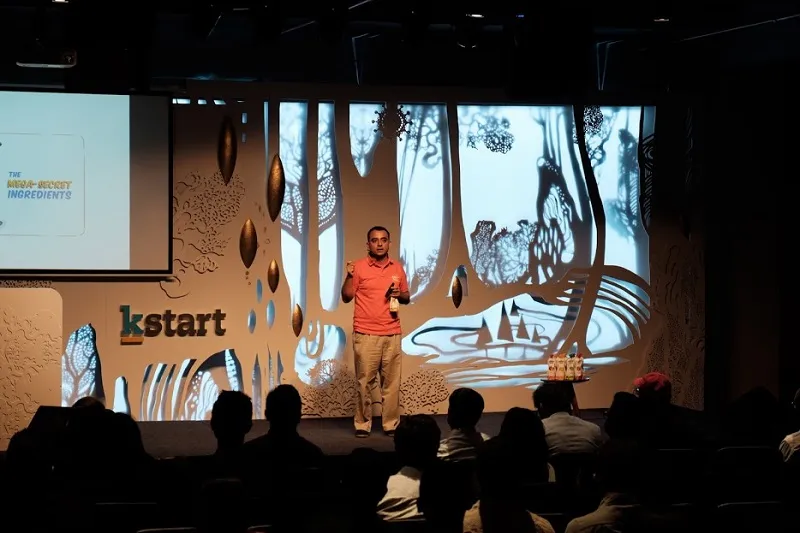From Google’s Rajan Anandan to TVF’s Arunabh Kumar, an insider's view into disruptive digital marketing strategies
The Kstart Digital Marketing Summit held on May 13 in Bangalore, saw over 100 attendees participating in the talks, discussions, and workshops held by renowned best practitioners and leaders in the digital marketing space.
Expert Speak: Disruptive digital marketing strategy and its relevance for startups
Build a differentiated product. And build it for the future, not the present. – Rajan Anandan, Vice President and Managing Director of Google Southeast Asia and India

The event began with a fireside chat by Vani Kola, MD, Kalaari Capital, with Rajan Anandan, who highlighted the need for startups to focus on growth hacking. “What worked for the first 300 million users will not necessarily work for the next 300 million.” An active angel investor in early-stage technology companies, Anandan spoke at length about how building an amazing product and having a smart growth plan in place will pave the way for angel investors to walk in. He advised digital content companies to focus on the target group, their level of understanding, and then decide the content. Calling on the Indian startup community to solve one of India’s key challenges, which could also open doors for growth, he said: “Women in rural India think the Internet is not for them. That's an important problem to solve."
“Achieving dynamic scale is important to tap huge money.” – Jan Metzger, MD and Head of APAC Telecommunications, Media and Technology, Citi Corporate and Investment Banking

Jan Metzger spoke at length about how cultural differences impact businesses and investors with examples across the globe. This included examples such as how Walmart failed in Germany because of people’s preference for non-branded items, which was offered by Aldi, a leading global discount supermarket chain. He highlighted how digital growth is bringing about a change in people’s behaviour, thereby giving companies and startups an opportunity to connect and sell offline and online.
Metzger also cited examples of companies facing huge losses yet continuing to get funding because of the scale of capital involved: “Achieving dynamic scale is important to tap huge money.” Talking about the Indian startup ecosystem, he said, “While investors are getting increasingly excited about India, nobody has created huge cash flow. That slows down the investment excitement. But on the flip side, it also means there is an opportunity for startups to create huge cash flows.”
“Being young and cool is easy. But, being authentic isn’t.” – Niraj Kakkar, Co-Founder, Paperboat

Niraj Kakkar shared a personal account of what the founders of Paperboat went through at different stages of their entrepreneurial journey. “When we started selling a product that had a rich tradition associated with it, we had a lot of doubts about how it would be received by the consumers.” Talking about Paperboat, which was banking on nostalgia to promote its beverages and successfully carved out a niche for itself among carbonated and other branded beverages, Niraj said, “Being authentic to what you have to offer is very important. When you say authentic, it should be ingrained in every step of the process. In the case of Paperboat, we even ask ourselves questions as detailed as – ‘how do we ensure the mangoes we use have been ripened naturally?’” “His key message was – “It is important for today’s brands to live up to the authenticity the brand promises.”
“The customer expects you to understand – ‘who I am’.” – Ram Seshadri, Director - Solution Consulting, India, Adobe.
Ram Seshadri peppered his talk with examples from Adobe and other brands to reiterate the importance of providing cool customer experiences and how customer relationship management technologies should be tapped to personalise a brand’s customer experiences. He said an easy yet important framework for startups is to understand and answer five simple questions:
- How to find the customer?
- How to engage the customer?
- How to understand them?
- How to leverage this understanding to engage with the customers and convert them into repeat customers?
- How can the customer become an ambassador of my brand?
He also stressed upon the need to harness the power of earned media (publicity gained through promotional efforts) rather than relying on paid media or advertising: “Earned media has the tenacity to go viral, thereby getting you greater customer connect. Hence the question you should ask yourself as a brand is how do I get earned media to be part of my arsenal?”
"Everything is viewed on a smartphone first. And, you have just 3 seconds to catch a user's attention." – Arjun Kolady, Head of E-commerce, Local, and Travel, Facebook India
With mobile becoming the first touch point with the brand for consumers, Arjun Kolady’s session focused on the importance of tuning content that aligns with this trend. He said, “Most mobile consumption is native and feed-based. That’s why mobile content needs to meaningful. Resorting to spamming a customer’s mobile screen is a dead end.” He added, “Contrary to what is generally perceived, user attention is higher on a phone than on large screen devices…82 per cent higher on mobile than on desktops. It’s a great opportunity to tell a story, but be sure to capture the users’ attention in the first three seconds. Also, remember, videos without audio don’t usually work. The important question you need to ask to how to grab the user’s attention.”
Explaining the nature of mobile content and the need to define newer metrics to define success of a mobile campaign, Arjun said, “There’s actually very limited correlation between click through rate (CTR), and the actual output, especially in the mobile world. Metrics like CTR, cost per click (CPC), etc. don’t work in the mobile world. Organisations must think more creative, more native, and figure the right measurement for your business. There is need to experiment a lot more and figure out new solutions.”
“Don't worry about the big guys. You're not like them, you're different.” – Sanjay Gupta, Chief Marketing Officer, Urban Ladder
If there was one key message, one big take way, for startups from Sanjay Gupta’s session, it was that startups should focus on being different, but relevant, He underscored why word-of-mouth marketing is of great importance and how the focus on creating ‘wow’ customer experiences can surge the ‘share’ quotient, thereby resulting in greater publicity. However, he did caution the audience by saying: “Advertising is not about tricking a customer. It's about making them an advocate.”
"If you're not close to the obvious truth, you will miss the mark." – Arunabh Kumar, Founder & Group CEO, The Viral Fever & TVF Media Labs
The man behind Qtiyapa, TVF Pitchers and a slew of hugely successful online series Arunabh Kumar, said, “Today, everyone wants to target India’s youth. Ask this question – ‘Where is this Indian youth? – to a media guy in India, he will say the Indian youth for him is in some eight odd cities; whereas a digital content creator will probably say Mumbai or Delhi. But the answer to that question actually is – every possible corner from Jammu to Kanyakumari.”
Based on his experience in driving the popularity of The Viral Fever, Arunabh said, “The key to popularity and acceptance is to tell authentic Indian stories,” adding: “If you are serious about anything at all, then be sincere. Stick to obvious truth. Learn a few formulae and be authentic and target your decision towards the consumer of your content.”
(Disclaimer: Kalaari Capital is one of the investors in YourStory)







